Addicted to the Light, or, Veni, Vidi, Velvi
Text and Photography Copyright Mark Hobson. All rights reserved.
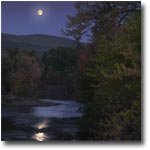
Photo 1
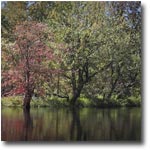
Photo 2
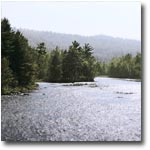
Photo 3

Photo 4
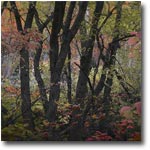
Photo 5
|
|
In the medium of photography, much has been written about light. Not really surprising considering that light (with a small L) is a prime ingredient in the photographic process, and I mean that in the most basic technical sense - without light (of any kind) photography, as most of us know it, is not possible. Plain and simple, light is the paint with which photographers coat our canvas of film or digital sensor.
A great deal of what has been written about light is of a technical nature, a subject that concerns itself with the exposure of our canvas - apertures, f-stops, shutter speeds, ISO, etc. Again, on a technical level, this is pretty basic and necessary stuff in the creation of photographs. It is, in fact, the stuff that any photographer with ambitions beyond the snapshot must learn, master, and then “forget” in the pursuit of personal expression. Technicals are an ingredient in the broth, but they are certainly not the soup itself.
Light (small L) also has a ying-yang-like flip side - Light with a capital L. Light (capital L) is also a prime ingredient in photography. Light (capital L) has not only a descriptive effect that illuminates a subject’s physical properties, but also possesses an emotional affect that influences an observer’s experience of the photographer’s visual statement. In all probability, more has also been written about this aspect of Light than the other aspect of light.
Most of what has been written about Light, however, stands in direct contrast and opposition to Brook Jensen’s (editor, LensWork magazine) statement that, “There is no such thing as ‘good’ or ‘bad’ photographic light. There is just light.” In fact, most of what has been written about Light in the popular photographic press implicitly expresses the notion that there is just one kind of “good” Light - that golden, slanting Light that is found early and light in the day. All other shades of Light tend to get reduced to categories of “usefulness” for particular subjects or conditions.
This myopia, or, quite literally, narrow-light-spectrum form of vision has resulted in what I would call, at worst, a kind of photographic Hudson-River-School-of-Painting-envy, or, at least, a H-R-S-o-P imitation/plagiarism. Photographs of this stripe, found in a zillion how-tos on photo forums, in mainstream photo magazines, etc., attest to the effectiveness of this overwhelming indoctrination of photographers of all persuasions. If, for some reason, there is ever a mass protest in front of a camera store (like when Velvia “classic” is discontinued), I expect to see more than few placards that read, “Golden Light Rules”, although I will make an effort to distinguish between those that imply that Golden Light reigns and those that are just ads for a new book about photographic rules for photographing in golden light.
So, for those of you who haven’t figured out the obvious here, I believe, no, scratch that, I know that good, even great nature photographs can be created in all kinds of light, day or night. In fact, in my opinion, the biggest challenge a nature photographer can face is to get the shot when the light isn’t “right”. By not “right” I mean light such as direct midday sunlight, overcast light, rainy day light, light (or lack thereof) after sunset, and before sunrise, hazy day light, and so on.
Now some would suggest, as previously mentioned, that these kinds of light are “right” for certain types of photographic conditions, but generally only for those specific situations. Examples of such might include situations such as diffuse light for flowers as found on overcast days or in shadow. Strong directional light, harsh or soft, to bring out texture. Overcast light for photography in the deep forest in order to minimize excessive contrast. Good advice if want to make photographs that follow the leader and look like what the rest of the crowd produces.
You don’t have to be a creative genius to load up the camera with Velvia, follow the golden (light) rule, and bag some visually pleasing photographs. But to eschew this path and strike out in pursuit of creating photographs for the pure joy of seeing, no matter what the wind or weather, takes making a bold break from the safe and narrow path of by-the-rules-and-numbers photography. By breaking away from the tried and true, you can begin to make photographs that will possess a distinctive look and feel, and that differs from that of even exemplary camera-club fare.
About the photos...
"A good photograph is never ‘about light.’ Good photographs are about feelings." Brooks Jensen
Photo 1 - The French call it entre chein et loup - between the dog and the wolf. It’s a time after the sun has set, but before the night has taken charge. With this light, even the most mundane of scenes are revealed with a strangeness that transcends the mere act of recording.
Photo 2 - Bright midday sun on a clear day - again, this light is considered a bane for most photographers. Nevertheless, this light can render scenes and subjects with startling clarity. If you learn how to manage contrast in the field and mix in a little help from PhotoShop, bright midday light can offer many interesting possibilities
Photo 3 - Midday sun on a hazy day - many photographers consider this to be nadir of light for photographing. Many would rather take a break, have a beer, and talk about photography than actually photograph under these conditions. In fact, this type of light tends to reveal the world in receding layers and the air itself has a palatable presence.
Photo 4 - Dappled sunlight in the forest is considered tricky photographic business and justly so if you are shooting transparency (slide) film. Digital sensors can handle it better than film, but color negative film handles it best of all. In fact, in most of the examples displayed here, color negative film will undoubtedly yield the best results. For those of you who are hooked on Velvia saturation levels, most color negative films are offered with a “vivid” variant. If that’s still not enough “pop”, there’s always the saturation sliders in PhotoShop.
Photo 5 - Gray overcast light mutes even the most vibrant of colors. The attenuated tonal range creates a mode and feeling all its own. Resist the temptation to expand the contrast/tonal range in Photoshop and enjoy the rich yet muted color palette.
Mark Hobson’s Photo Workshops feature the Digital Darkroom. For more info click here.
Comments on NPN creative photography articles? Send them to the editor.
MH-NPN 1196
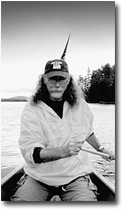 MARK HOBSON is a family guy lucky enough to be living in his favorite place on earth, the Adirondacks. A former agency creative director and commercial photographer, Mark has brought his love of the wilderness and photography together to form Nessmuk & Stoddard Trekking.
MARK HOBSON is a family guy lucky enough to be living in his favorite place on earth, the Adirondacks. A former agency creative director and commercial photographer, Mark has brought his love of the wilderness and photography together to form Nessmuk & Stoddard Trekking.
Mark's photography has been used by Fortune 500s such as Kodak, Xerox, Heinz, PPG, and Bausch & Lomb. As a creative director he has produced campaigns for clients such as; I LOVE NY, Lake Placid, The Adirondacks, Cooperstown and the Finger Lakes.
His Adirondack photography has been exhibited in galleries in the NE. He has won recognition as a repeat finalist in the Carnegie International Nature Photo Competition. Mark has also been a judge for the Kodak International Snapshot Competition as well as the Kodak Camera Club.
Mark offers comprehensive written portfolio reviews for amateur and professional photographers. Contact him at photoworkshop@charter.net for details.
Be sure to visit Mark's website at www.adirondacklight.net.
Comments on NPN landscape photography articles? Send them to the editor.


| 


